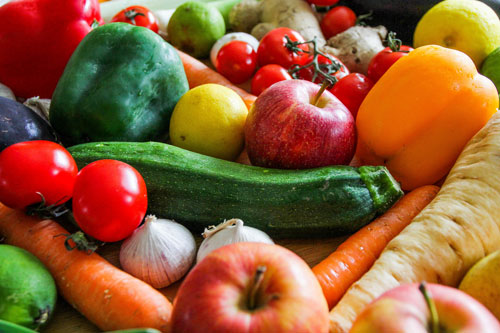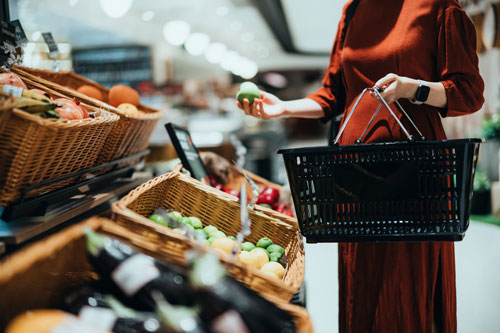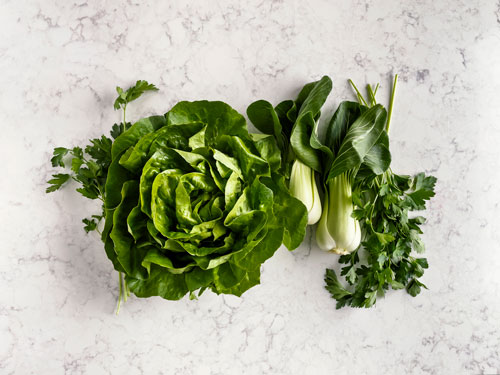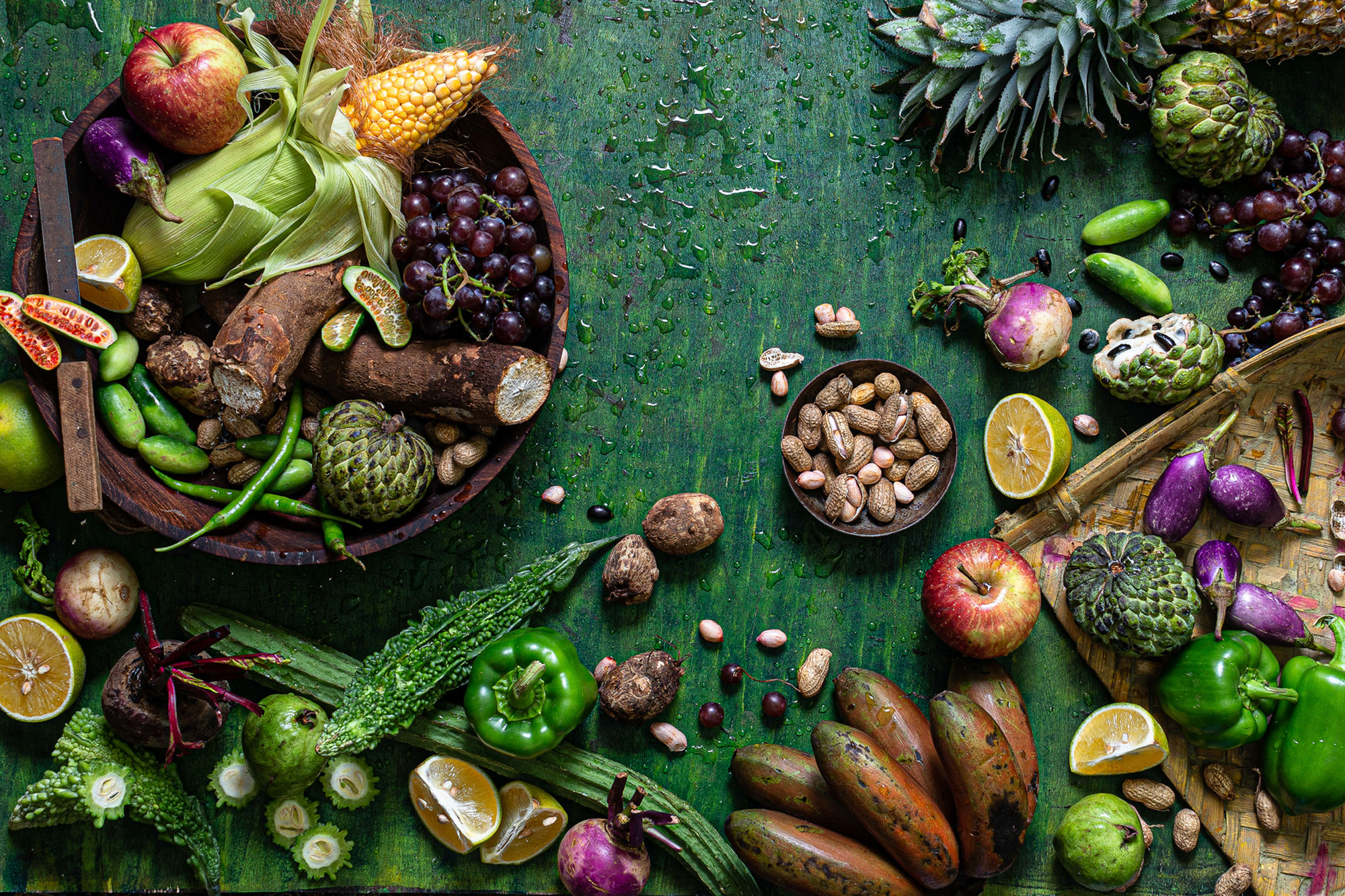What makes biting into a juicy peach so much more satisfying in the summer than any other time of the year? It’s because it’s in season.
It’s a privilege to be able to eat whatever we want when we want it — a privilege that has never been so obvious as in current times. In any American supermarket, you can take your pick from an endless variety of fresh produce. While a grocery store’s global food system is a great way to experience food from other countries, most of the food you find at the store isn’t in season. Now is a better time than ever to enjoy local produce that nurtures both our bodies and the world we live in.
Meet the Experts
Dr. Laure Hyvernat is a nutrition expert.
Angelique Panagos is a nutritionist.
Dr. Sally Norton is a gastrointestinal surgeon, and weight loss expert.
Why Eating Seasonally Is Important
It benefits the environment.
It’s a pretty straightforward concept: What makes food “seasonal” is harvested (and later bought by consumers like you) in the current season. When produce isn’t in season, it’s likely to have flown thousands of miles or grown in unnatural conditions. In America, about 32% of fresh vegetables, 55% of fresh fruit, and 94% of seafood are imported. When you eat seasonally (and therefore locally), you reduce your carbon footprint by using less fuel required when transporting produce from another state or country.
It reduces the reliance on pesticides and chemicals.
Out-of-season produce may be treated with chemicals and gases or coated with an edible film after they’re harvested to allow for a slower ripening process so it can be available year-round. Many local food producers will use organic and natural pest repellants to preserve the health of the food they distribute.
It can save you money.
If a fruit or vegetable is in season, there’s a higher quantity available. Therefore, it’s available at a lower price. This is why it’s so complex — and costly — to find an autumn vegetable, like a fresh pumpkin, in the middle of spring.
It helps your local economy.
When the demand for local products rises, it can increase jobs in your community. Plus, you’ll know that shopping local means the money goes back to your community. Especially if you live in a smaller suburb, this can greatly impact the local economy.
It’s better for your health.
“To eat seasonally is to eat naturally. Eating seasonal foods helps us reconnect with nature’s cycles, it is fresher and more nutritious,” says nutritionist Angelique Panagos. “Seasonal food contains ingredients that suit the body’s demands for that time of year,” she says. Think of when your body is craving hydration in the warmer weather months. That’s when electrolyte-boosting fruits like watermelon are harvested. Beyond its nutritional value, eating seasonally “means focusing on fruit and vegetables over processed, packaged food,” says Dr. Sally Norton, a gastrointestinal surgeon, and weight loss expert. Eating fresh “will reduce your risk of cancer, improve blood pressure and help you lose weight,” she says.

It tastes better.
If you have a garden or access a friendly neighbor’s garden, go ahead and see if you can taste the difference between a garden tomato and one found at the grocery store. Likely it’s more colorful, riper, and tastes even better. When you have mass-produced food that needs to meet customer demand, they tend to lack flavor. This could be because they’re sitting in transportation for days, crops aren’t picked at their peak, or they’re kept in cold storage.
How to Eat Seasonally
Convinced you want to eat seasonally? Here’s how to start:
- Stick a seasonal calendar on your fridge. If you live in an urban area and shop at supermarkets, it can be impossible to know what is in season when. “Pin a calendar on the fridge and respect this natural cycle as much as possible,” says Dr. Laure Hyvernat, a nutrition expert.
- Shop smarter at the grocery store. Many products at a supermarket will be labeled about where they’ve been sourced; some stores even have dedicated sections for local produce.

- Visit your local farmer’s market. A farmer’s market is an excellent indicator of what’s in season as they’re often harvested within the last day. It’s also an opportunity to speak with the growers and ask questions or get advice about your produce.
- Get involved with a CSA program. CSA, or a Community Supported Agriculture program, is a subscription service to a local farm. You pay upfront, and those funds allow the farmers to operate their business. In exchange, you receive a weekly or monthly box of produce that’s usually delivered to your door, and they arrange a group pick-up spot in a local area to save on gas emissions. The caveat is that you don’t get to pick and choose the product you get on your box – it’s entirely based on what the farmers are growing at the moment. However, it’s a great way to experience new types of fruits and veggies and expand your palate (what better excuse to try a new Kohlrabi recipe?).
- Prioritize cooking at home. Eating at home gives you total control of what and how you eat. The more time you invest in your food, the more you tend to eat healthily and sustainably. “Spending that extra time in the kitchen is always worth it. Processed food is the worst for your health and the planet,” says Hyvernat. Reframing your approach to cooking in alignment with the seasons means you have to think outside the box and try new recipes.
- Grow your own produce. It’s a fast-track way to align yourself with the seasons. “It’s a fantastic experience that teaches reconnection to the earth and respect for natural food growth,” Hyvernat says. “Starting a garden is an excellent way to have more fresh and tasty food on your plate.” If you don’t have the backyard space, you can always start a small indoor garden to grow herbs, tomatoes, cucumbers, and more in the comfort of your home.
- Maximize your freezer. If you tend to crave certain seasonal ingredients year-round, building up a freezer stash can extend the lifespan of your food and save money on buying products that are out of season. “Studies show that many nutrients, including delicate anthocyanin flavonoids, found in blueberries, can be preserved by freezing,” says Norton. “A freezer full of frozen berries makes for great smoothies, while frozen veggies can be oven-roasted or added to soups or casseroles whenever you want a nutrient boost.”
So, what’s in season?
If you live in a four-season area, follow this general guide from Hyvernat for what’s in season and when. Of course, it depends on your location, but the list below will give you a general idea. For more specifics, check out this website.
Spring
Strawberries, raspberries, radishes, cucumbers, artichokes, asparagus, beetroots, carrots, mint, lettuce, parsley, red onions, rhubarb

Summer
Peaches, melons, kiwis, apricots, red fruits, apricots, watermelons, oranges, basil, beans, beetroots, broccoli, carrots, celery, courgettes, cucumbers, fennel, lettuce, onions, radishes, red onions, arugula, rhubarb
Autumn
Butternut squash, pumpkins, mushrooms, cabbages, parsnips, Brussels sprouts, carrots, cauliflower, turnips, celery, kale, leeks, onions, pears, apples, blackberries, potatoes, spinach
Winter
All cabbages (cauliflower, parsnips, Brussels sprouts, broccoli, turnips), potatoes, carrots, leeks, onions, pears, clementines
We only recommend products we have independently researched, tested, and loved. If you purchase a product found through our links, Sunday Edit may earn an affiliate commission.







